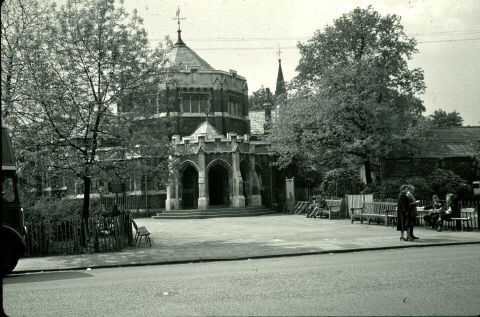Designed by Henry Price, the Manchester City Architect and funded by the American philanthropist Andrew Carnegie Didsbury Library is one hundred years old.
It was built on the site of old Victorian cottages, which were demolished in 1912, and the bowling green at the back of the adjacent Wellington Inn.
Its architect, Henry Price, described it as ‘designed in the 15th century gothic style with tracery windows and emblems of Science, Knowledge, Literature, Music and Arts and Crafts in stone distributed over the building…’.
Fletcher Moss was instrumental in persuading Andrew Carnegie to fund the library.Alderman Moss was deputy chairman of Manchester Corporation’s Library committee and was said to have cornered the Scottish American philanthropist at a breakfast at London’s Cecil Hotel.
According to Moss, he wrote his name and address in his book and said he would speak to his secretary.The next thing that was heard was a letter authorising the citizens of Didsbury to build the Library.
Its Gothic style was controversial, people thought it would look more like a church than a library but Moss won the day once he had propositioned Carnegie.
Andrew Carnegie had made his fortune in steel, selling his empire in 1901 spending the rest of his life giving it all away, believing that, “A man who dies rich dies in disgrace” and by the time of his death had provided funds to build 660 libraries in the UK and 1,689 across the United States
He would provide funds to build the libraries as long as local council would agree to stock and maintain them.The Carnegie Trust continues to this day, but it now concentrates on public policy.
The library will be celebrating its centenary with a number of events on the 16th May including vintage stalls outside, WW1 soldier, Tommy Atkins from 11.30 and a talk on Andrew Carnegie by Diana Leitch at 14.00.







